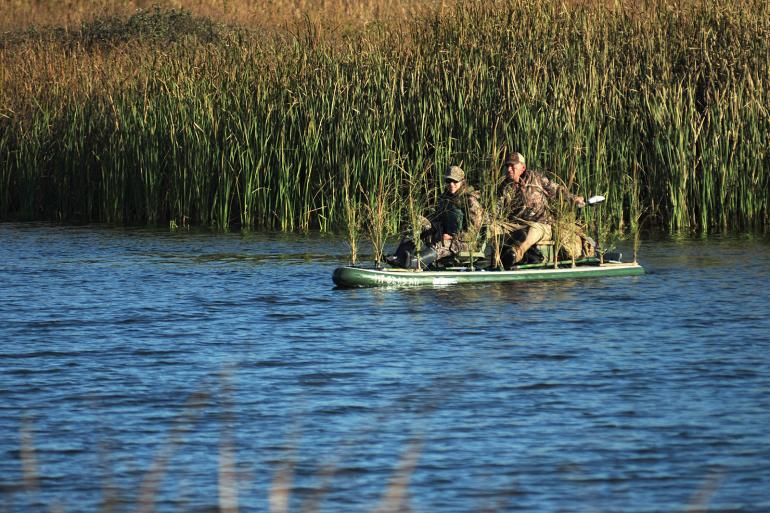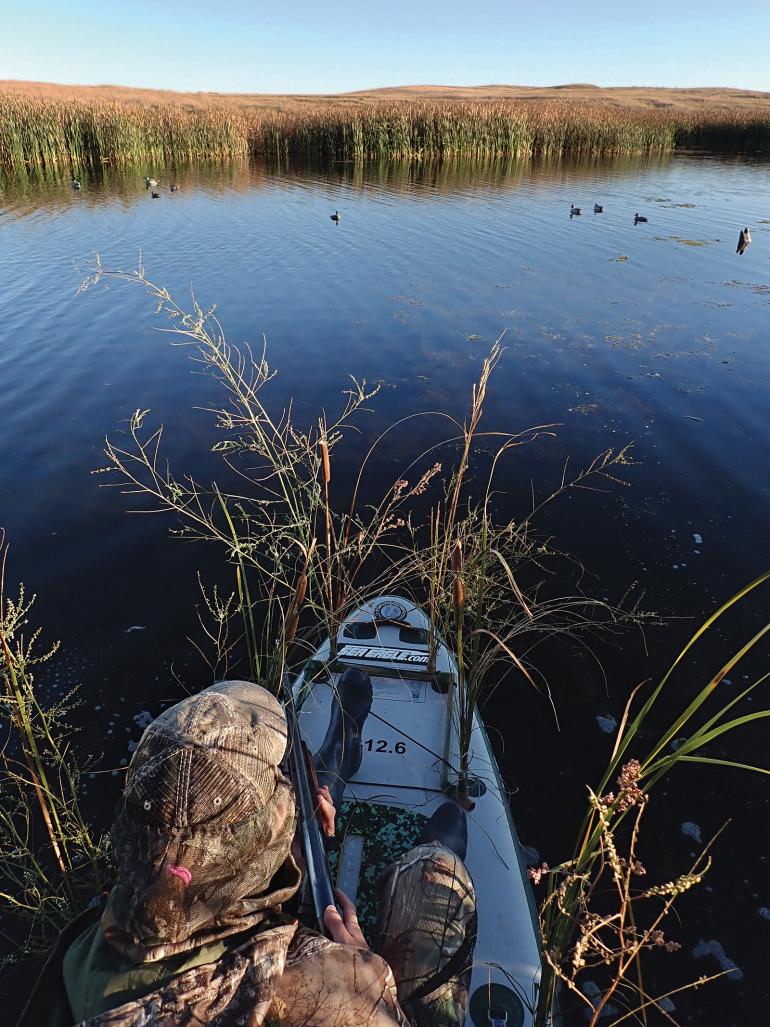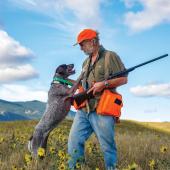Board Stiff
A mobile waterfowl-hunting setup.
You can successfully hunt waterfowl on foot, but aficionados of the sport wouldn’t contemplate existence without a duck boat. On a recent duck-hunting road-trip, I found myself continually peering in the rearview mirror of a friend’s Tacoma as we towed a craft appearing as an errant mating of marsh grass with the mutt-mobile in Dumb and Dumber. The setup was outfitted with lounge chairs and a grill for cooking pancakes and sausage beneath an intricate camoflauge of natural materials. Over the weekend, I fired one shell to harvest a pintail drake—the weight of the duck easily surpassed by the bulk of sausage, hotcakes, and maple syrup in my belly.
Impressed with the boat, though, I vowed to have one of my own—until I discovered I could handsomely upgrade my aging 2011 Expedition for the price of a similar craft. But with an inflatable paddleboard in the garage and a Three Forks ranching heritage embracing “making do is better than new,” the following September I had a surprisingly serviceable duck boat for the price of a couple sticks of 3/4-inch PVC pipe and some fittings.
I have a frame built from PVC pipe with risers at about 16-inch intervals, which attaches to D-rings on the paddleboard.
On an inaugural outing I plopped Percy, my English setter, in front of me and navigated toward a shallow bay on a modest reservoir. I tossed out a half-dozen mallard decoys, then nudged the boat into some reeds on the shoreline. Few ducks were flying, but we returned home with a fat greenhead. A few days later, I traded Percy for Lisa, my wife, on the bow. We slid into a narrow arm on a different reservoir where I’d spotted copious flocks of teal the previous evening. She knocked down five tasty blue-wings, giving her husband a smug air of vindication for pursuing another of his oddball ideas in outdoor recreation.
Should you choose to adapt your own paddleboard to a duck boat, let me communicate the configuration and lessons I gleaned from creating my own outfit.
The Craft
You’ll want a very stable paddleboard for a duck boat. Mine is a Sea Eagle FS126. It’s 40 inches wide and 12.5 feet long, with a capacity of two people (or up to 500 pounds). It’s not the easiest thing to paddle. Most of the time I power it with a small trolling motor. It is so stable that I can fly-fish inshore saltwater with it, standing on top of a marine cooler from which I propel it with a push pole. I also use a push pole sometimes while duck hunting in shallow water.
For hunting with a partner, the shooter sits ahead of me on a swivel seat that came as part of the “fishing rig” package from Sea Eagle. I remove the long center skeg (fin) to run in shallow water. It tracks fine with two shorter, outer skegs. A board of this size is a beast to inflate with a hand pump. I use an electric pump from iRocker that plugs into a 12-volt receptacle.
The Accessories
A storage container with a lid (holds shells, clothing, etc.) is my seat on the rear when hunting with a partner. I have a frame built from PVC pipe with risers at about 16-inch intervals, which attaches to D-rings on the paddleboard. Natural materials (cattails, reeds, grass) are inserted in the risers for camoflauge. The frame and seats are painted with flat brown and green. A piece of camo burlap material drapes over the motor and battery while hunting.
The Tactics
Tasty dabbling ducks (teal, mallards, gadwall, wigeon) love to feed in shallow water—exactly the kind of place you can reach with a paddleboard but not a traditional motorboat. I shove the stern into vegetation when possible, with the bow facing open water and the wind at my back. I place a half-dozen decoys about 20 yards downwind. When setting up in a crosswind, I place them on the upwind side as ducks tend to land into the breeze.
To keep things safe I always wear a PFD while moving. When hunting with a partner, only the person seated in front shoots.
Fantastically fun and perfectly functional, used in appropriate environments, there’s no better (or cheaper) duck boat than a paddleboard.











